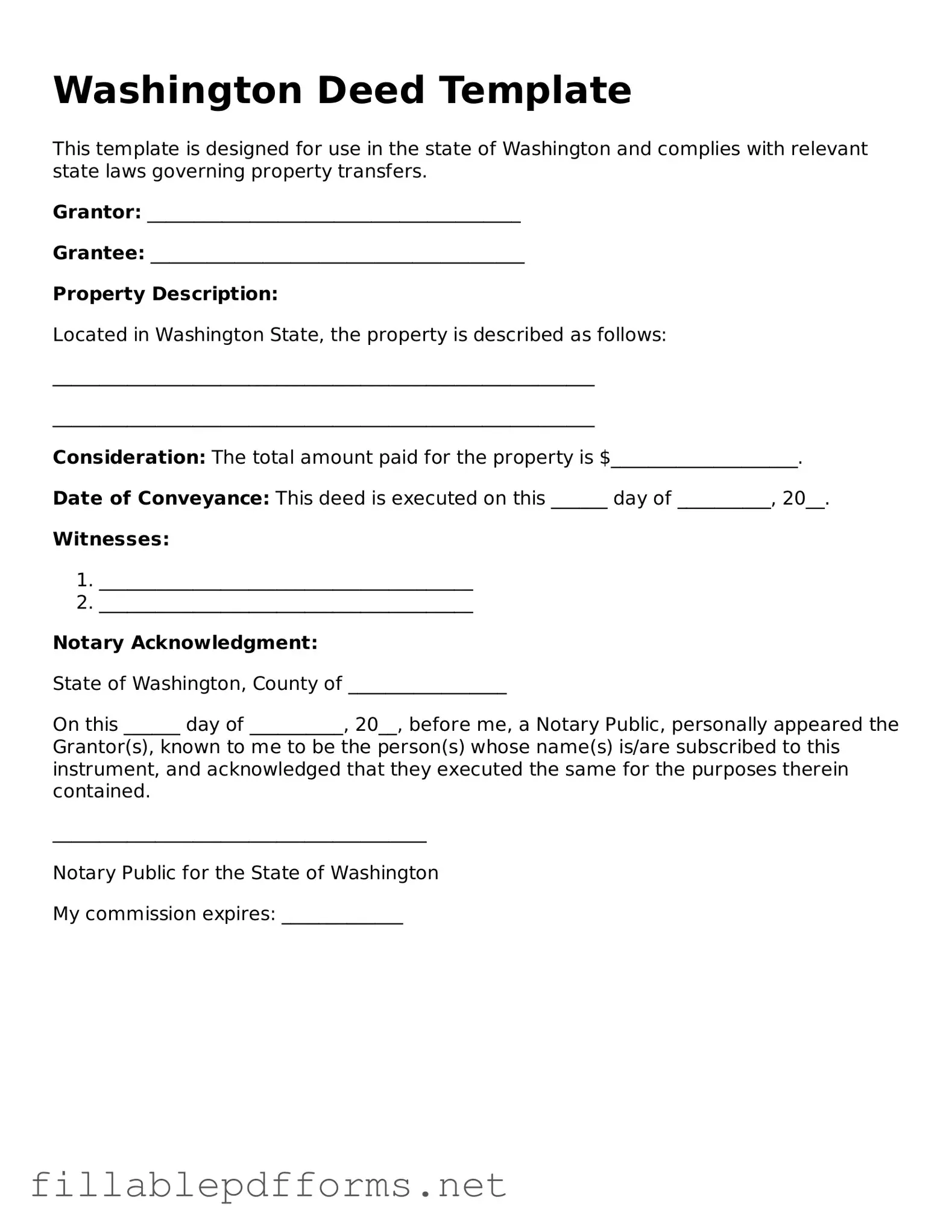The Washington Deed form serves as a crucial legal instrument in real estate transactions within the state of Washington. This document facilitates the transfer of property ownership from one party to another, ensuring that the transaction is both legally binding and properly recorded. Key elements of the deed include the names of the granter (the person transferring the property) and the grantee (the person receiving the property), a detailed description of the property being conveyed, and the signatures of the involved parties. Additionally, the form may specify any conditions or restrictions related to the transfer, providing clarity and protection for both the buyer and seller. Understanding the nuances of the Washington Deed form is essential for anyone involved in real estate transactions, as it not only affects ownership rights but also plays a vital role in the public record system, which helps to establish clear title and prevent disputes over property ownership.
